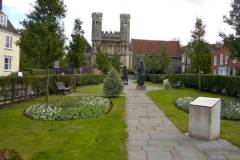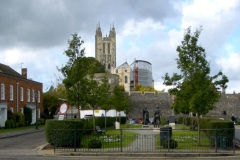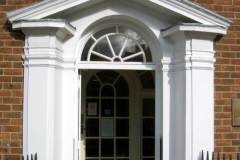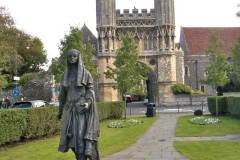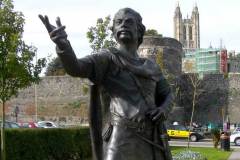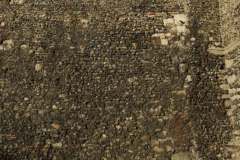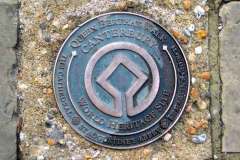Introduction
Lady Wootton’s Green forms a physical and historical link between the cathedral, St Augustine’s abbey and St Martin’s church, which together were granted World Heritage status in 1988.
History
In 580 Bertha,the great grand-daughter of Clovis the founder of the Frankish monarchy, married Prince Ethelbert of Kent. She was a Christian and a former Roman building, said to be on the site of the current St Martin’s church, was adapted for her use as a chapel. Her route there from the city started from what is now Queningate, a blocked pedestrian gate in the southern city wall, and passed through the fields which would later become Lady Wootton’s Green. In 597 Pope Gregory sent Prior Augustine to convert the British to christianity and on his arrival he was allowed to use the Queen’s chapel for worship. By 601 King Ethelbert had been converted to christianity and provided the resources for Archbishop Augustine to build his cathedral in the city and the abbey to bear his name outside the walls. The abbey was for the burial of the future Archbishops of Canterbury and Kings of Kent and the Green thus became part of a ceremonial way between the city and abbey. It also became, from the 12th century, the abbey’s almonry with an associated chapel.
The abbey was enclosed and the Fyndon Gate built by 1308, but after the dissolution of the monasteries the King converted part into his “new lodgings”, eventually to be leased to Edward Lord Wootton in 1612. Lady Wootton was widowed in 1626 but lived on in her palace until she died in 1659. Eventually the garden in front of her gates, which had also been known as Mulberry, Palace or Ambery Green, took her name and came back into public ownership. A row of houses on Broad Street was demolished in 1896 to open the view to the cathedral and create the public gardens. The medieval buildings surrounding the Green were destroyed by bombing in 1942, leaving only the old almonry building at No 1 to be rebuilt on its remaining 13th century ground floor walls. In 2007 statues of King Ethelbert and Queen Bertha by Stephen Melton of Ramsgate were installed. They were given by the Canterbury Commemoration Society to the city in recognition of the part they played in establishing the christian faith in England.
What to see:
- The Green from Broad Street (Image 1).
- The opposite view from in front of Fyndon Gate with the old almonry, now a diocesan building, on the far right (Image 2).
- The well proportioned Adam style portico of the diocesan building (Image 3).
- The statue of Queen Bertha, imagined bringing the news of St Augustine’s mission to Ethelbert, in clothes copied from contemporary archaeological finds and images (Image 4).
- The statue of King Ethelbert, welcoming the news from his queen, in clothes also copied from contemporary archaeological finds and images (Image 5).
- The blocked Queningate in the southern wall of the city, just across Broad Street. Below the red Roman bricks of the arch can be seenthe jambs of the original carriageway (Image 6).
- One of the way finding plaques in the Green indicating Queen Bertha’s walk which starts at the south west door of the cathedral and ends at St Martin’s church (Image 7).
Accessibility: The Green is accessible at all times.
Sources: Lyle (2008)
SR
To see a drawing by local artist, Joan Russell, of Lady Wootton’s Green in 1944 click here.

